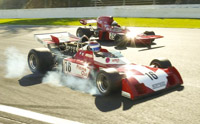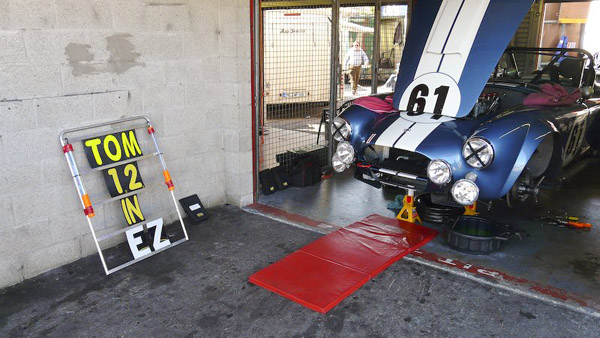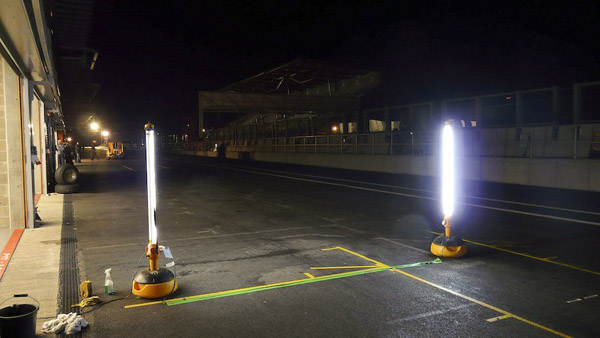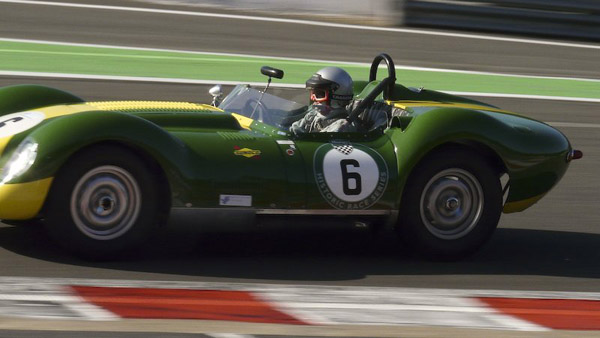Inhaling enthusiasm
2008 Spa Six Hours report
Author & photography
- Mattijs Diepraam
Date
- September 30, 2008
Related articles
- Spa - The Transit-and-trailer revival, 2006 Spa Six Hours report, by Mattijs Diepraam
- Spa - A different world, 2009 Spa Six Hours report, by Mattijs Diepraam
- Spa - Rain, beer and champagne, 2010 Spa Six Hours report, by Mattijs Diepraam/Frank van de Velde
- Spa - Agreeable circumstances, 2011 Spa Six Hours report, by Mattijs Diepraam/Frank van de Velde
- Spa - Frantic action under the sun, 2012 Spa Classic report, by Mattijs Diepraam
- Spa - Taking on the GT40s, 2013 Spa Six Hours report, by Mattijs Diepraam
- Spa - Tropical Spa… but in the rainy season!, 2014 Spa Six Hours report, by Mattijs Diepraam
- Spa - An old-fashioned one, 2015 Spa Six Hours report, by Mattijs Diepraam
- Spa - Before the rain, 2016 Spa Six Hours report, by Mattijs Diepraam
- Spa - Nightmare morphs into fairytale, 2017 Spa Six Hours report, by Mattijs Diepraam
- Spa - That five-and-a-half hour sprint race on a Saturday night…, 2018 Spa Six Hours report, by Mattijs Diepraam
- Spa - Slippery when wet, 2019 Spa Six Hours report, by Mattijs Diepraam
- Spa - Endurance revival, 2021 Spa Six Hours report, by Mattijs Diepraam
- Spa - The Dutch double up, 2022 Spa Six Hours report, by Mattijs Diepraam
- Spa - Nightmares and fairytales, 2023 Spa Six Hours report, by Mattijs Diepraam
- Spa - Original victory, 2025 Spa Six Hours report, by Mattijs Diepraam
Who?Rick Carlino, Robs Lamplough What?Surtees-Cosworth TS9B, March-Cosworth 711 Where?Spa When?2008 Spa Six Hours, Grand Prix Masters race 1 (September 27, 2008) |
 |
Why?
Asked to make a list of Europe’s top historic events many will come up with the usual suspects: Goodwood, Monaco and Le Mans. The late-September Spa Six Hours – usually run the weekend after Goodwood’s Revival Meeting – won’t be on everybody’s shortlist, but it is slowly but steadily edging towards a position in that illustrious first division. Sure, it lacks the glitzy glamour provided in spades by the big invitationals but it is reasonably well-organised and, as a unique selling point, has that certain old-school panache that distinguishes it from other big historic events held at modernized venues.

When Bernie Ecclestone ordered a reconstruction of the pit area, it was feared that it would take away most of the seventies patina that was still very much around, that the New new Spa wouldn’t be the same as the Old new Spa. But a quick on-the-spot comparison with the 2006 Six Hours edition, the last one run from the same circuit, buildings and surroundings that were already there when the shortened Francorchamps track was put into service almost three decades ago, learns that those fears have been completely unfounded. Yes, La Source was moved a few yards further to the North but has remained essentially the same, its spirit still very much alive. The new chicane is undoubtedly better than the awkward old Bus-Stop, although Lewis Hamilton might argue with that. And what about that new F1 pit building? Seen from a distance, from the top of Eau Rouge, it forms an imposing sight but viewed from within the paddock itself it very much manages to blend in. Inside, it is all plain concrete, the Belgians having preferred to keep it simple. That means that only the most fervent nostalgics were found to make comparisons with the shiny architectural miracles such as the ones having arisen in F1’s pastures new at Sepang and Shanghai.
So let’s see what elements help define that elusive Spa Six Hours feel. Is it the Transit-and-trailer paddock atmosphere that we came to enjoy in earlier editions? Is it the passe-partout experience, the organisers allowing everyone to get up really close to what is happening – for no extra money. Or is it simply the glorious track with its inspiring corners surrounded by sublime Ardennes scenery?

Starting with the latter – definitely. Or course it helped to no end that this time the circuit was basking in the very un-Ardennes-like delight of two days of cloud-free heavens bathing the entire circuit and all the cars and people on it in a wonderful autumn light. But even in torrential rains this landscape will work its charm, as does that hallowed stretch of tarmac snaking its way through the hills and forests in the Spa-Malmédy-Stavelot triangle.
The Spa scenery
The Six Hours paddocks are among the event’s worst-kept secrets. Everyone is allowed to wander the area to see what the entrants are up to. Only the grid formation is out-of-bounds for the ordinary paying visitor, as should be the pitlane area, but one gets the feeling that that isn’t particularly well policed. The trucks and motorhomes from which the bigger teams run their operations line up behind the F1 pit building but the lasting impression you get from walking the entire area is formed by the caravans, campers, awnings, tents, transporters and trailers from which the lesser competitors work and in which they live their passion for an entire weekend. Even here, of course, there is serious money involved but you sense that most of it is self-earned and seldomly spent foolishly. You are inhaling enthusiasm.
Paddock atmosphere
Walking the grid
Most of the races run during the Spa Six Hours weekend involve driver changes – including the main event, naturally – so there is always something going on in the pitlane. One could simply sit to watch life in a frantic environment without paying any attention to the racing and still get a buzz. In fact, the same applies to standing in a corner watching the men and women at work on the black bits – and sometimes off them. Instead of wasting your efforts on keeping a lap chart or trying to make sense of the shreds of commentary that breeze past your ears during a momentary lull in the on-track action it is very gratifying to see the best drivers carve a decisive line through La Source while the lesser ones miss their braking point or simply find themselves all over the place. Here, a good driver is able to outbrake a fellow competitor whereas the average one will only regularly outbrake himself.

Eau Rouge is a different story. There is something very Zen to standing at the top of the hill overlooking the run down to Eau Rouge, watching the cars disappear as they bottom out on the bridge across the eponymous mountain stream before seeing them reappear moments later as their drivers battle the lateral forces caused by the curvaceous climb to the Raidillon. Going track-side does involve a bit of imagination as you need to take the long way around to visit places such as the Raidillon, Les Combes or Stavelot. There is no easy way to walk the circuit when using the pit area as a starting point – at least not while wanting to remain close to the Armco. That does have one advantage: taking the car to move about quickly means reacquintainting yourself with the roads that once were part of this magnificent circuit. And that’s as it should be: no visit to the Spa Six Hours would be considered complete without having paid homage to the gauntlets once laid down by Burnenville, Masta and Stavelot…
Life in a frantic pitlane
Track action
